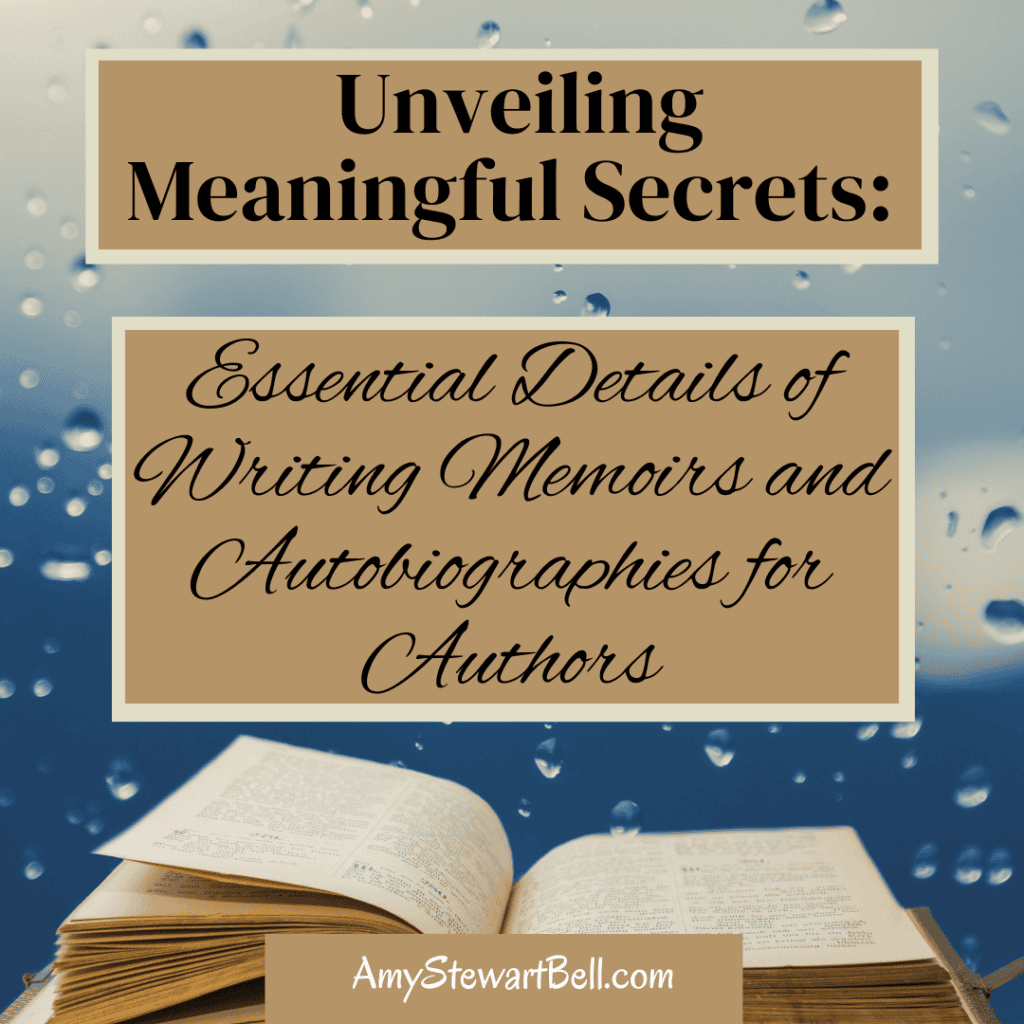Understanding the Difference: Memoirs vs. Autobiographies

When it comes to sharing our life stories, two powerful forms often come into play: memoirs and autobiographies. Understanding the difference between these two genres is crucial for anyone embarking on the journey of life story writing.
Autobiographies are comprehensive accounts of one’s entire life, providing a chronological narrative that spans from birth to the present day. It’s an expansive canvas where every significant event is painted with detail, offering readers a complete picture of who you are. In contrast, memoirs focus on specific themes or moments that define your existence. It dives deep into personal narratives, exploring emotions and experiences that resonate on a more intimate level.
The beauty of memoirs lies in their ability to connect with readers through shared experiences and feelings. They allow us to reflect not just on what happened but also why it mattered—capturing the essence of moments that shaped us without needing to recount every detail of our lives.
So, whether you choose to pen an autobiography or delve into the art of memoir writing, remember this: both forms hold immense power in storytelling. They give voice to our journeys and invite others into our world, creating bonds through understanding and empathy. Embrace your unique narrative—your story deserves to be told!
Finding Your Unique Voice: How to Write Authentically
Finding your unique voice is not just an option; it’s a necessity for anyone serious about writing authentically. Your written voice is the distinct mark you leave on your readers, setting you apart in a sea of content. To achieve authentic storytelling, you must embrace your personal style in writing—this means being true to yourself and your experiences.
Engaging narrative techniques are essential tools in this journey. Whether you’re weaving a tale or sharing insights from your life, it’s crucial to captivate your audience with compelling stories that resonate on an emotional level. Emotional truth in memoirs can be particularly powerful; it invites readers into your world, allowing them to connect deeply with your experiences.
Remember, authenticity isn’t about perfection; it’s about vulnerability and honesty. When you write from the heart and allow your true self to shine through, you’ll create narratives that not only engage but also inspire. Don’t shy away from showcasing who you are—your unique voice is what will ultimately draw readers in and keep them coming back for more.
The Art of Structure: Crafting a Compelling Narrative Arc
The art of structure is the backbone of any compelling narrative, especially when it comes to writing memoirs. Crafting a narrative arc in autobiographies is not just about telling your story; it’s about engaging your readers and taking them on an emotional journey. A well-structured memoir captivates the audience, drawing them into your experiences while allowing them to connect with the essence of who you are.
When it comes to chapter organization tips, think of each chapter as a stepping stone in your narrative arc. Each one should build upon the last, creating tension and anticipation that keeps readers turning the pages. Utilize storytelling techniques in memoirs such as flashbacks or foreshadowing to enhance this structure. These elements not only enrich your narrative but also provide depth and context that resonate with readers on a personal level.
Remember, writing structure for memoirs is not merely a formula; it’s an opportunity to showcase your unique voice and perspective. Embrace the challenge of structuring your story thoughtfully—your journey deserves to be told with passion and precision!
Researching Your Life: Balancing Memory with Factual Accuracy

Researching your personal history is not just an exercise in nostalgia; it’s a passionate journey that intertwines memory with the richness of factual accuracy. As authors, we have the incredible opportunity to weave our stories into a narrative that resonates with truth and authenticity. Yet, this delicate balance between memory and reality can be a daunting challenge.
When embarking on this journey, fact-checking memoirs becomes paramount. Our memories, while vivid and emotional, are often colored by time and perspective. Engaging in thorough research allows us to ground our experiences in tangible facts, creating a compelling narrative that honors both our lived experiences and the realities surrounding them.
Interviews and oral histories serve as invaluable tools for authors diving deep into their pasts. By reaching out to family members or friends who share our history, we can uncover layers of context that may have been forgotten or overlooked. These conversations not only enrich our understanding but also breathe life into our writing—transforming fragmented memories into cohesive stories filled with depth.
Ultimately, researching personal history is about honoring our journeys while embracing the complexities of memory vs. reality in writing. It’s an exhilarating process that invites us to reflect deeply on who we are and how we’ve come to be—an adventure worth every moment spent navigating through the past!
The Importance of Theme: What Message Do You Want to Convey?
The central theme in memoirs is not just a backdrop; it’s the very heartbeat of your narrative. It’s what breathes life into your story and connects with readers on a profound level. When crafting message-driven stories, you must ask yourself: what message do you want to convey? This question is the compass that guides your writing journey, ensuring that every word resonates with purpose.
Exploring themes of resilience or love in autobiographies can transform personal experiences into universal truths. These themes have the power to uplift, inspire, and heal both the writer and the reader. They create a shared space where vulnerability meets strength, allowing for an authentic connection that transcends individual stories.
Thematic coherence in writing is crucial; it weaves together seemingly disparate threads into a rich tapestry of meaning. It invites readers to reflect on their own lives while immersing them in yours. So as you pen your memoir, let your central theme shine brightly—it’s not just about telling your story; it’s about leaving an indelible mark on those who read it. Embrace this opportunity to convey messages that matter, and watch as your words ignite passion and understanding in others!
Writing about trauma authentically is not just an act of storytelling; it’s a powerful journey into the depths of our souls. When we embrace vulnerability in storytelling, we open ourselves up to a world of emotional depth that resonates with readers on profound levels. It’s in these raw, unfiltered moments that true connection occurs—where shared pain transforms into collective healing.
Crafting autobiographies that delve into painful experiences allows us to navigate our own wounds while offering solace to others who may be grappling with similar struggles. The act of putting pen to paper can serve as catharsis through memoirs and autobiographies, providing both the writer and the reader a safe space to confront and process their emotions. This healing through writing is not merely cathartic; it’s revolutionary. It empowers individuals to reclaim their narratives and find strength in vulnerability.
As we share our stories of pain, we illuminate paths for others who may feel lost in their own darkness. Through this brave act of expression, we foster understanding and compassion—a reminder that while trauma may isolate us, our shared humanity can bind us together in ways we never imagined possible. Let your words echo with authenticity; let them be a beacon for those seeking comfort in their own journeys through pain.
Publishing Your Story: Options and Strategies for Authors
Publishing your story is not just a milestone; it’s a powerful declaration of your voice and experiences! As an author, you stand at a crossroads between self-publishing and traditional publishing for memoirs and autobiographies, each path offering unique opportunities to share your narrative with the world. Self-publishing grants you full creative control, allowing you to craft every detail of your autobiography just as you envision it. On the other hand, traditional publishing can lend credibility and access to professional resources that may elevate your work.
But let’s not forget about marketing your autobiography! This is where passion meets strategy. Building an engaging online presence, connecting with readers through social media, and leveraging book signings or speaking engagements can ignite interest in your story.
If you’re leaning toward traditional publishing, finding a literary agent is crucial. They are the gatekeepers who can open doors to publishers eager for compelling nonfiction narratives. Crafting an irresistible book proposal that highlights the unique aspects of your memoir will be essential in capturing their attention.
Remember, whether you choose self-publishing or pursue traditional routes, the heart of this journey lies in sharing YOUR story—one that has the potential to inspire others and create lasting connections!
Conclusion: Embrace Your Journey – Start Writing Your Memoir or Autobiography Today!
LET’S CONNECT!
There are many ways to connect with Amy Stewart Bell. We would love to know what you think and any of the topics we offer. We welcome your comments and want to interact with you!
If you haven’t yet, grab your copy of Once Captured, the first in Amy’s Captive Series. And now you can grab the second in the series, Uncharted Captivity, as well!
You can also connect in other areas. Join us on Instagram @AmyWritesAll, on X @AmyWritesAll, and on Facebook @AmyWritesAll.
Be sure to join our community newsletter; you will get even more inside info!







